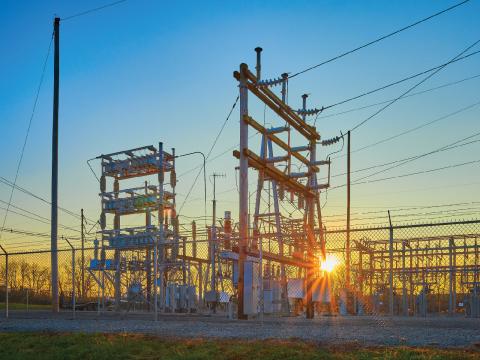Architecture and Interoperability
To advance grid architecture interoperability is to advance a shared understanding of the places where equipment connects and control exchanges hands. Interoperability demands a community effort that results in multi-party agreements on the interface for interactions within the electric system. For this reason, the TSP architecture and interoperability efforts possess a strong outreach component. The program’s role has been to educate and facilitate discussion with the objective of developing mindshare about transactive energy and common approaches that make system integration simple. The bulk of the work in this area is done with others. The major organizations for convening communities of interested parties are listed below.

Gridwise Architecture Council (GWAC)
GWAC was formed by DOE’s Office of Electricity to look at architecture principles, structures, and concepts that would enable the integration and interactions of the heterogeneous mix of equipment and operations platforms envisaged in a smart grid. Transactive energy principles of separation of responsibilities and the requisite distribution of decision-making processes address foundational challenges to coordination. Architectural notions or layered decomposition from bulk system to customer facility-managed equipment, as well as communications structure overlaid on energy flow structures, are important and help enable conversations that improve the state-of-the-art.
The GWAC mission initially focused on interoperability for easing the integration of smart devices and systems with electric grid operations. This work influenced the formation of the Smart Grid Interoperability Panel (see next section) and led to tools that layout the scope of interoperability and its advancement in industry deployments.
Smart Grid Interoperability Panel (SGIP) and the Smart Electric Power Alliance (SEPA)
The formation of the SGIP in 2009 proved to be an important PNNL-GWAC contribution. Congressional legislation contained in the American Recovery and Reinvestment Act placed the National Institute of Standards and Technology (NIST) in charge of smart grid interoperability, with a directive to work with GWAC and others. SGIP embraced foundational ideas, including the Smart Grid Interoperability Framework, and several smart grid standards were advanced. NIST’s role transitioned to industry and SGIP merged with SEPA in 2017.
The TSP contributed to interoperability activities in SGIP/SEPA via leadership positions on the Board of Directors, the Technical Committee (which provided overall technical oversight) and subgroups, including Architecture, Customer Systems (industrial, commercial, and residential facilities), and Transactive Energy. Foundational whitepapers on TE, TE scenarios, and the energy services interface (ESI) were developed in collaboration with SGIP/SEPA. The SEPA organization continues to be an effective convening organization for advancing common concepts and models for TE, as well as architectural frameworks.
International TE Community
The TSP maintains a long collaboration with TNO in the Netherlands and more recently with Technical University of Eindhoven (TU/e). The interactions have produced papers (IEEE Power & Energy Magazine issue on TE) and IEEE PES tutorials on TE. The organizations teamed to explore TE advances and challenges by forming the International TE Community of about 25 practitioners and interested parties in Europe and North America. They are presently collaborating on an international survey of TE field deployment practices and outcomes.
The TSP has also collaborated with the Polytechnic Institute of Porto in Portugal. This has included exchange of multi-agent systems approaches to simulation of DER and the publication of a book on Local Energy Markets. The book highlights TE and related market-based mechanisms as effective approaches for coordinating flexibility resources with renewable resources.
IEEE Power & Energy Society (PES)
The IEEE PES has been a long-standing engineering community venue for TE education and collaboration. TSP has contributed to discussions and papers on dynamic pricing with the intent to move toward more transactive approaches. The PES remains a premiere outlet for technical papers, conference papers, and presentations. The Transactive Energy Systems Conferences transitioned from GWAC to the IEEE. The program supported two tutorial sessions on TE sponsored by PES and continues to participate in several committees and working groups.